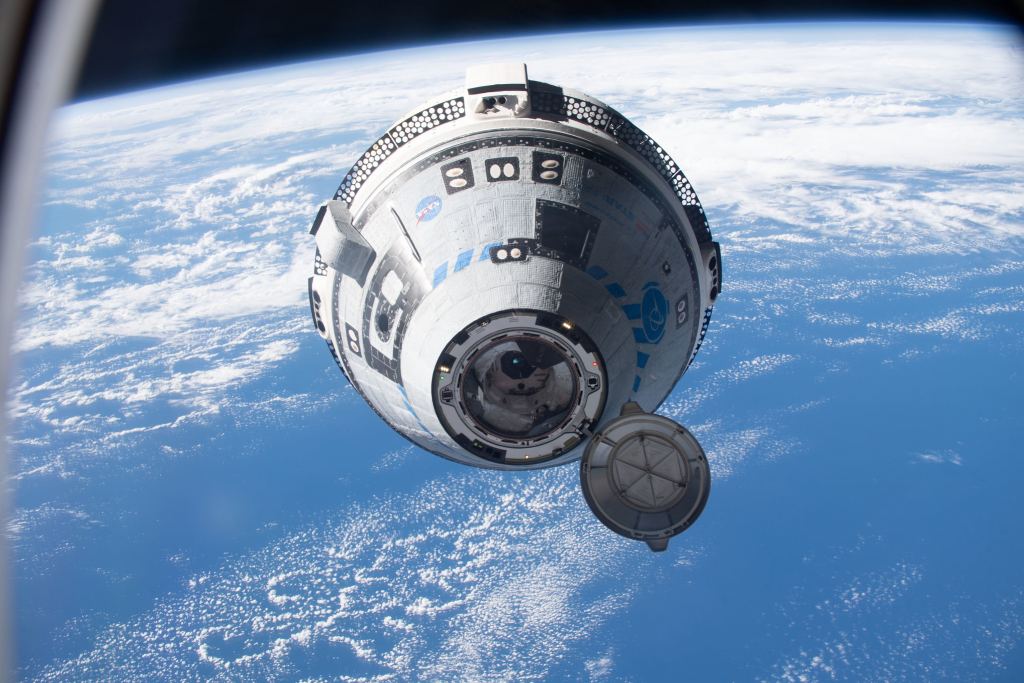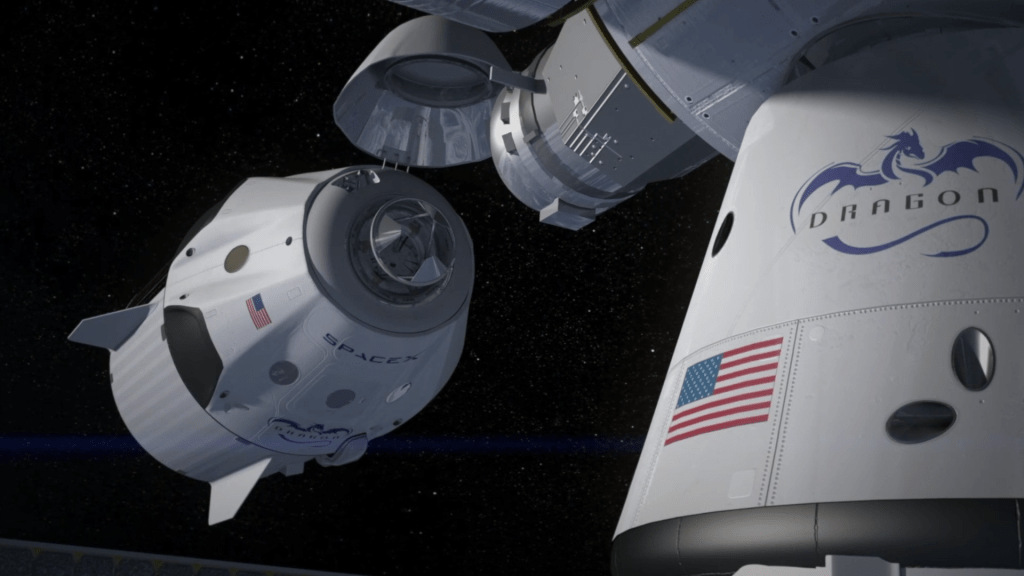NASA has Purchased 5 More Crew Dragon Missions, Keeping the ISS Going Until 2030
By Matt Williams
On November 15th, 2020, NASA and SpaceX made history when a crewed spacecraft – the Crew Dragon Resilience – lifted off from American soil and delivered four astronauts to the International Space Station (ISS). This mission (designated Crew-1) was a culminating achievement for NASA’s Commercial Crew Program (CCP) and effectively restored domestic launch capability to the U.S. for the first time since the Space Shuttle‘s retirement in 2011. As of April, SpaceX’s launch vehicles and spacecraft were used to mount the first all-private Axiom Mission-1 and the fourth flight of the CCP (Crew-4).
Building on this success, NASA recently filed a Notice Of Intent (NOI) to purchase five additional Crew Dragon spacecraft. This decision is based in large part on the delays suffered by Boeing – NASA’s other CCP commercial partner – and the development of its CST-100 Starliner spacecraft. But perhaps the most significant takeaway from this filing is how it reaffirms NASA’s commitment to the ISS until 2030. With the recent withdrawal of the Russians from the ISS program, the future of the station has been somewhat uncertain.

The NOI was filed on Jun 1st, 2022, at 02:09 PM EDT (11:09 AM PDT) on behalf of NASA’s Kennedy Space Center. According to the Notice, NASA will be purchasing five additional Crew Transportation Systems (CTS) as part of the Commercial Crew Transportation Capabilities (CCtCap) contract they signed with SpaceX. The purpose of this, it states, is so that NASA can maintain rotating crews aboard the ISS and continue to meet its obligations to its international partners – which is in keeping with the NASA Authorization Act of 2015. As it states:
“It is the policy of the United States to maintain an uninterrupted capability for human space flight and operations in low-Earth orbit, and beyond, as an essential instrument of national security and the capability to ensure continued United States participation and leadership in the exploration and utilization of space...
“[A]warding five additional PCMs to SpaceX will ensure redundant and backup capabilities through 2030, which is essential for the following reasons: (i) the obligation to provide continuous flight availability for the safe operation of the ISS; (ii) the potential for anomalies or accidents; (iii) the potential for unforeseen external factors; and, (iv) risks associated with the design of a safe and reliable CTS.”
NASA’s decision to extend its commitment to the ISS until 2030 was officially announced in December 2021. However, the fate of the ISS became the subject of concern in February of this year after Russia began its invasion of Ukraine. In response, the U.S., the EU, and other ISS partner nations imposed sanctions on Russia and suspended cooperation with its federal space agency (Roscosmos). Roscosmos’ Director-General (Dmitry Rogozin) responded by threatening (and stating) that Russia would withdraw from the ISS program (though it has yet to commit to this course of action).

According to the Notice, NASA’s decision was also motivated by concerns regarding the development of CTS vehicles by both companies contracted through the CCP – Boeing and SpaceX. Whereas SpaceX managed to conduct a successful uncrewed rendezvous with the ISS (Demo-1) and a successful crewed rendezvous (Demo-2) between March 2019 and May 2020, Boeing’s Starliner failed to reach the ISS due to a technical error. On May 20th, 2022, the Starliner managed to successfully launch and rendezvous with the ISS (and has since returned).
However, at this point, NASA is not supremely confident that Boeing will be able to validate the Starliner and meet its obligations under the CCP in the near future. These delays highlight the need for backup spacecraft to ensure that crew replacements can continue to be sent to the ISS without interruption. As the Notice states:
“Due to the technical and schedule challenges experienced by Boeing, the number of missions previously awarded to Boeing and SpaceX, NASA projections of when alternative crew transportation systems will be available, and the technical challenges associated with establishing and maintaining a CTS capability for crewed flights to the ISS approximately every six months, it is necessary to award five additional PCMs to SpaceX.”
While the Notification is non-competitive, NASA indicated that “interested organizations” are free to submit proposals within 15 days of the NOI’s issuance – by 05:00 PM EDT (02:00 PM PDT) on June 16th, 2022. Based on the capabilities and qualifications of these proposals, NASA will decide whether or not to conduct the acquisition on a competitive basis. In short, Jeff Bezos, United Launch Alliance, Lockheed Martin, or any other SpaceX competitor have a week to convince NASA to go with their concepts instead!

This Notice highlights the rather lucrative relationship that NASA and SpaceX have enjoyed recently. Since 2010, NASA has contracted with this company to provide regular launch services for payloads to the ISS. As of 2020, it is now reliant on SpaceX to send astronaut crews there, thus freeing the agency of its past reliance on Roscosmos and Russian launch services. It is little wonder why NASA would choose to turn to SpaceX once again to address its concerns regarding the continued operation of the ISS, something that the current geopolitical situation has cast doubt on.
In the coming years, SpaceX will also provide the Human Landing System (HLS) for the Artemis III mission – the first crewed mission to the Moon since the Apollo Era. According to the mission architecture, the reusable Lunar Starship (or Starship HLS) will launch separately from the Space Launch System and Orion spacecraft that will carry the four Artemis III astronauts. The Lunar Starship will refuel in orbit, and then rendezvous in Cis-Lunar space with the Orion, at which point two of the astronauts will transfer to the HLS and venture down to the surface of the Moon.
Still, the door is open for a little competition, which is good for spaceflight. So if you’ve got a beef with Musk (these days, who doesn’t?) and have an aerospace company behind you, get on that!
Further Reading: SAM.gov
The post NASA has Purchased 5 More Crew Dragon Missions, Keeping the ISS Going Until 2030 appeared first on Universe Today.

June 9, 2022 at 01:14AM
via Universe Today read more...

Post a Comment